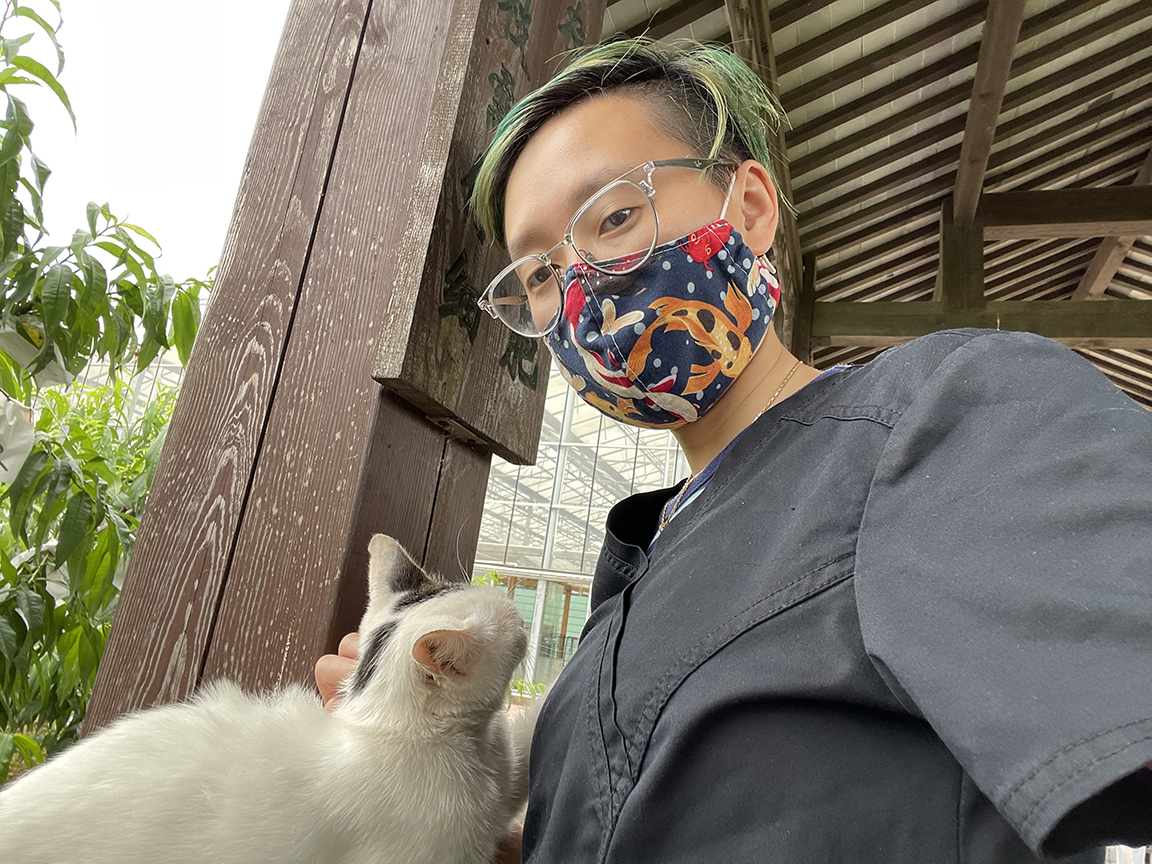Vivian Liu
This summer, I had the opportunity to go to China. I had three goals for myself during this trip. First was investigate public perceptions of stray cats and the current stray cat population management strategies in China. To complete this goal, I distributed an online survey to mainstream social media sites as well as interviewed people who worked with stray cats. My other two goals were to reconnect with my Chinese culture and to improve my spoken Chinese. I hope you enjoy this journey with me.
Beijing:
I started my journey in Beijing, and I had the pleasure of working with the International Center for Veterinary Services. Mary, the founder of the hospital, saw a stray cat problem in Beijing and helped to introduce the first structured Trap-Neuter-Release (TNR) program. During my conversations with the staff, the most difficult aspect of addressing the stray cat problem in Beijing was the lack of funding and manpower. Volunteers would trap cats and then contact the hospital to schedule an appointment to neuter them. A few additional obstacles contributing to the stray cat population was the high cost of transporting pets leading to increased abandonment. These problems were exacerbated in the last few years due to the pandemic. I learned that while the perceptions of stray cats were generally positive, the current management strategies were outdated and there needs to be more education about the current stray cat problem.

Shanghai:
Cat Island is quite the unique refuge. Located on an island in Pudong, Shanghai, Cat Island is a refuge established in 2020. It houses more than 300 stray cats from Shanghai, all of whom were brought in by citizens of the area. Many stray cats in small villages are more friendly toward humans, which puts them at risk for thieves who will take them to sell at meat markets. Due to this concern for their well-being, locals will trap friendly strays and bring them to Cat Island so they can either find homes or live safely on the island. Alongside it is the Shanghai Stray Cat Management Center which provides education about nutrition, illness prevention, and the community’s TNR program. Anyone interested in adopting is also required to volunteer to ensure they are suitable cat owners and to prevent reckless adoption and future abandonment. Since its establishment, there have been many volunteers wanting to learn more about how they can help. Due to the lack of governmental support, this organization relies solely on donations and volunteer efforts.

Guangdong:
The last spot of my trip was to visit my hometown of Taishan, Guangdong. In these villages, the dogs and cats are considered neither strays nor pets. The dogs are meant to be guard dogs and the cats control pest populations. It was normal to see cats hanging out in the stores and restaurants of this smaller city. However, this is very different from the perceptions of cats in the bigger city of Guangzhou. There were many pet stores selling pure bred cats as well as cat cafes for entertainment. A large population of stray cats are the result of abandonment. People would see cute cats online and purchase a cat, but then would become overwhelmed by the amount of work and cost it took to care for a pet, leading to abandonment. Another problem was the overfeeding of intact strays, which leads to overpopulation since they were able to reproduce faster than TNR programs can neuter. Overall, I discovered public perceptions of stray cats were positive, but the problem was due to the lack of education surrounding their population control. I hope my study helps to bring awareness to this.

